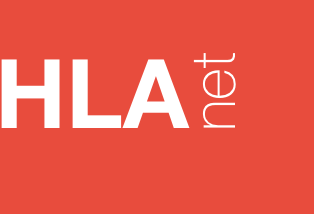Questionnaires for individuals and population samples
- Questionnaire for the characterisation and description of individuals in samples of populations for use in anthropologic studies. Get questionnaire (PDF)
- Questionnaire for the characterisation and description of human population samples for use in anthropologic studies. Get questionnaire (PDF)
Guidelines for reporting HLA typings
As defined at HLA-NET meeting on March 17th – 18th 2011 in Athens
Typing resolution
Whenever possible, perform allelic or high resolution typing following EFI standard D1.320 a and the document “HARMONISATION OF DEFINITIONS OF HISTOCOMPATIBILITY TYPING TERMS” (see hla.alleles.org and Nunes et al. (2011)).
- Allelic resolution is a DNA-based typing result consistent with a single allele as defined in a given version of the WHO HLA Nomenclature Report.
- High resolution is defined as a set of alleles that specify and encode the same protein sequence for the peptide binding region of an HLA molecule and that excludes alleles that are not expressed as cell-surface proteins. It identifies HLA alleles at the resolution level of the 2nd field (formerly 4-digit) or more, at least resolving all ambiguities resulting from polymorphisms located within exons 2 and 3 for class I loci, and exon 2 for class II loci.
- Intermediate resolution is defined as a DNA-based typing result that includes a subset of alleles sharing the digits in the first field of their allele name and that excludes some alleles sharing this field.
- Low resolution is a DNA-based typing result at the level of the first field (formerly 2-digit) in the DNA based nomenclature. If none of the above resolutions can be achieved, DNA-based low resolution typings are accepted.
Data with ambiguities / high or intermediate resolution
In case allelic resolution is not achieved, data with allelic ambiguities are accepted in the following formats (in preferential order):
- List of possible genotypes (i.e. pairwise allelic combinations) e.g. B*08:01:01G,B*15:18:01 or B*08:21,B*15:93 or B*08:35,B*15:10:01 (corresponding to 3 possible combinations)
- Allelic strings e.g. B*08:01/21/35,B*15:10/18/93 (corresponding to 9 possible combinations)
- NMDP codes e.g. B*08:MDY,B*15:DZBP (corresponding to 9 possible combinations)
How to cite these questionnaires and guidelines
- Sanchez-Mazas, A. Vidan-Jeras, B., Nunes, J.M., Fischer, G., Little, A.-M., Bekmane, U., Buhler, S.., Buus, S., Claas, F., Dormoy, A., Dubois, V., Eglite, E., Eliaou, J.-F., Gonzalez-Galarza, F., Grubic, Z., Ivanova, M., Lie, B., Ligeiro, D., Lokki, M.L., Martins da Silva, B., Martorell, J., Mendonça, D., Middleton, D., Papaioannous Voniatis, D., Papasteriades, C., Poli, F., Riccio, M.E., Spyropoulou Vlachou, M., Sulcebe, G., Tonks, S., Toungouz Nevessignsky, M., Vangenot, C., van Walraven, A.-M. & Tiercy, J.-M (2012). Strategies to work with HLA data in human populations for histocompatibility, clinical transplantation, epidemiology and population genetics: HLA-NET methodological recommendations. Int. J. Immunogenetics 39(6) 459–476.
- Nunes JM, Buhler S, Roessli D, Sanchez-Mazas A and the HLA-net 2013 collaboration (2014) The HLA-net GENE[RATE] pipeline for effective HLA data analysis and its application to 145 population samples from Europe and neighbouring areas. Tissue Antigens 83: 307-323.

One comment on “Guidelines”
Comments are closed.